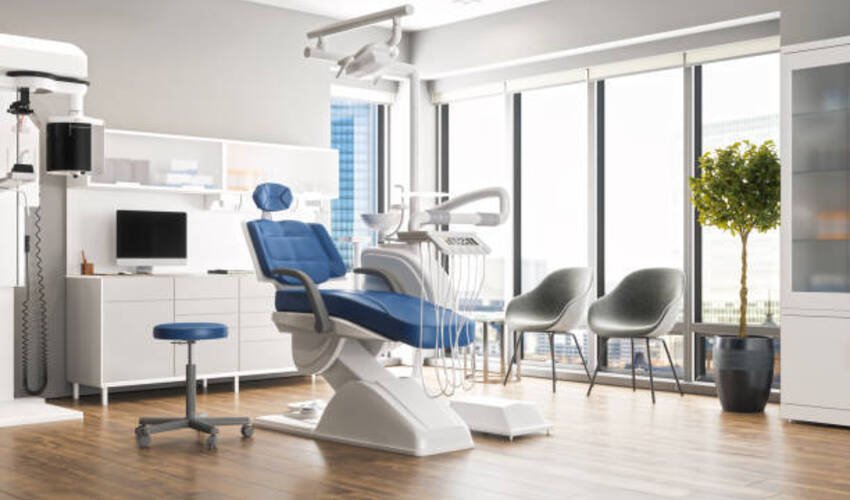Introduction
When we think of innovation in healthcare, our minds often go straight to new medicines, surgical techniques, or AI-powered diagnostics. Yet, there is another form of innovation that is equally transformative: the design of the spaces where patients and staff interact every day. Clinics and hospitals are more than treatment hubs—they are environments that influence how people feel, behave, and respond to care.
The waiting room, in particular, is the first impression most patients have of a healthcare provider. An overcrowded, uncomfortable space increases anxiety, while a well-designed, ergonomically supportive environment signals professionalism, compassion, and respect. For staff, thoughtful design improves workflows, reduces stress, and enhances productivity.
This article explores why waiting room design matters, the role of ergonomic furniture, and how aligning physical space with health-tech solutions can boost both patient outcomes and operational efficiency.
Why Waiting Area Design Matters in Modern Healthcare
Waiting areas are far more than holding spaces. They set the emotional tone for the entire patient experience. In fact, research published in the Journal of Healthcare Design has shown that well-designed environments reduce patient anxiety levels and improve satisfaction scores, even when clinical outcomes remain the same.
Poorly designed spaces often cause:
- Longer perceived wait times due to discomfort.
- Stress for vulnerable patients, including the elderly and children.
- Inefficiencies at check-in desks cause staff to juggle crowd control with administrative tasks.
On the other hand, comfortable, well-lit, and ergonomically furnished spaces improve trust and perceived quality of care. Patients who feel cared for before they even meet a doctor are more likely to report positive experiences and adhere to medical advice.
Healthcare providers investing in quality waiting room furniture can foster a more relaxed, efficient environment for both patients and staff. These investments are not cosmetic—they directly influence operational performance and satisfaction.
Why Choosing the Right Chairs Matters for Australian Clinics
The centrepiece of every waiting room is its seating. While artwork, lighting, and décor matter, patients notice chairs first—and they spend most of their waiting time in them. The wrong chairs lead to fidgeting, discomfort, and complaints. Worse, they can pose risks for patients with mobility issues.
For Australian clinics, the challenge is even greater. Local standards emphasise durability, safety, and hygiene. Healthcare seating must not only provide comfort but also withstand heavy use and meet strict infection-control protocols. This means selecting materials that are easy to clean, resistant to wear, and compliant with ergonomic best practices.
The needs of patients vary widely. Older visitors often require chairs with supportive arms to help them stand, while parents appreciate wipeable surfaces when sitting with children. Larger chairs or bariatric seating options can make clinics more inclusive.
Clinics looking for locally compliant, durable, and comfortable medical waiting room chairs in Australia can find solutions that blend quality with functionality. By aligning with ergonomic standards, healthcare providers demonstrate a commitment to patient safety and well-being.
Beyond comfort, the right chairs reduce perceived waiting times. Studies in environmental psychology reveal that physically comfortable patients are less focused on the clock. This small but powerful effect improves satisfaction scores and reduces tension at reception.
The Impact of Health-Tech and Furniture on Workflow
The rise of health-tech is transforming clinics: digital check-ins, electronic health records, telehealth, and real-time patient tracking are now mainstream. However, technology alone does not guarantee efficiency. Its success depends on being supported by ergonomic physical spaces.
Consider digital check-in kiosks. Without well-planned layouts and seating arrangements, patients cluster around terminals, creating congestion. Similarly, staff using EHR systems need ergonomic desks and adjustable monitors to prevent repetitive strain injuries during long shifts.
Monitor arms, height-adjustable chairs, and modular seating may seem like small details, but they amplify the impact of digital tools. When technology and furniture are integrated, clinics see improvements such as:
- Faster check-in times.
- Less staff fatigue during data entry.
- Smoother patient flow between waiting rooms and consultation rooms.
In essence, health-tech innovation cannot exist in a vacuum. It thrives when paired with supportive, ergonomically designed physical environments.
Designing for Hygiene, Comfort, and Safety
The pandemic highlighted how vital infection control is in waiting rooms. Furniture became a frontline defence, with surfaces needing to withstand regular sanitisation without degrading. Materials like antimicrobial fabrics, vinyl, and laminate gained importance because they offered both durability and easy cleaning.
But hygiene is not the only consideration. Safety and comfort remain equally critical. Features such as slip-resistant chair legs, rounded edges, and stable construction reduce accident risks in busy waiting areas. At the same time, ergonomic support improves patient well-being.
Australian healthcare regulations already emphasise these elements, but forward-looking clinics are going further—adopting furniture that not only meets standards but also enhances inclusivity and patient dignity. For example:
- Wider chairs to accommodate bariatric patients.
- Adjustable seating for people with disabilities.
- Thoughtfully placed seating clusters to provide privacy where needed.
These investments send a clear message: the clinic values every patient equally and prioritises both care quality and comfort.
Case Study: The Power of Design in Practice
A regional medical centre in Victoria undertook a waiting room redesign in 2023. They replaced aging plastic chairs with ergonomic, wipe-clean alternatives, reorganised seating to support digital check-ins, and added natural light features.
The results were striking. Within three months, patient satisfaction scores improved by 18%. Staff reported fewer complaints about wait times, and efficiency at the reception desk improved as patient flow became smoother.
Though the centre also upgraded its EHR system during this time, administrators credited much of the improvement to environmental changes. The lesson: technology works best when paired with thoughtful furniture and layout choices.
The Bigger Picture: Patient-Centred Design
Patient-centred care is about more than clinical interactions. It includes how patients are greeted, how they wait, and how they perceive the space around them. Waiting rooms are a symbol of respect. Comfortable, hygienic, and well-organised environments communicate that the provider values patient time and wellbeing.
For staff, these changes also matter. Nurses and administrators working in ergonomic environments experience less physical strain, higher job satisfaction, and lower burnout risks. This is essential in an industry facing staffing shortages and growing patient demands.
When viewed this way, investments in waiting room design are not “nice-to-haves.” They are strategic decisions that impact care quality, staff retention, and financial outcomes.
Looking Ahead: The Future of Healthcare Environments
As healthcare evolves, so too will waiting room design. Future trends include:
- Smart furniture: chairs with integrated sensors to monitor posture or vital signs.
- Digital signage integration: reducing perceived wait times by keeping patients informed.
- Modular layouts: flexible furniture systems that can adapt to fluctuating patient volumes.
- Sustainability: eco-friendly materials that meet both environmental and healthcare standards.
Forward-thinking clinics are already piloting these concepts. By combining health-tech with ergonomic design, providers can create spaces that are not only efficient but also welcoming, safe, and sustainable.
Conclusion
Healthcare innovation is not limited to medicines or machines—it extends to the spaces where care begins. Waiting rooms shape patient experiences, influence trust, and affect staff workflows.
- High-quality waiting room furniture improves comfort, reduces stress, and streamlines operations.
- Purpose-built medical waiting room chairs in Australia meet local standards while ensuring inclusivity and hygiene.
- When combined with health-tech, these choices create clinics that are efficient, compassionate, and future-ready.
For healthcare providers, the message is clear: investing in both digital systems and physical environments is essential. Patients feel the difference, staff work more effectively, and outcomes improve across the board.
Read Dive is a leading technology blog focusing on different domains like Blockchain, AI, Chatbot, Fintech, Health Tech, Software Development and Testing. For guest blogging, please feel free to contact at readdive@gmail.com.





